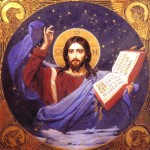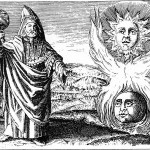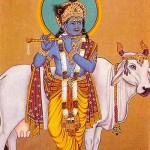
Drawing from ancient spiritual roots.
Here is a list of ancient sacred texts that I personally feel are connected to the Religion of the Sun, and express some of its philosophy, practices, and principles. Most of them are free to download.
I’ve only included texts that
- are relatively easy to read,
- do not endorse animal or human sacrifice, or unprovoked violence,
- do not endorse behavior that is contrary to principles,
- contain information that is of practical value.
That’s not to say there aren’t other ancient texts that contain things of value, but without being able to provide a commentary, I could be taken as endorsing their entire contents.
Taoist Texts
 The Tao Te Ching
The Tao Te Ching
These teachings are attributed to the Chinese sage Lao Tzu, but are actually a body of knowledge that was passed on orally from more ancient times.
Translated by Gia Fu Feng and Jane English (pdf with illustrations)
Translated by Lionel Giles (html)
The Hua Hu Ching
These are believed to be the teachings of Lao Tzu (author of the Tao Te Ching) that were passed down orally over centuries before reaching paper. Again, it’s far more likely they derive from an ancient body of knowledge.
Translated by Brian Walker (first 20 verses free on iTunes, free preview on Google Apps)
* Unfortunately there is no complete public domain version of this translation available, but we highly recommend purchasing it.
Hindu Texts
 The Bhagavad Gita
The Bhagavad Gita
In this work Krishna expounds to his disciple Arjuna some incredibly important spiritual principles, such as – The Principles of Right Action, of personal Sacrifice, and Love. Krishna does however mention celibacy as a means to enlightenment, which is something we disagree with and is in contradiction to more ancient wisdom found in other Hindu texts such as the Upanishads, and in other traditions such as Taoism. It reads to me like a later addition to the original text.
A modern translation:
Translation by Shri Purohit Swami (pdf)
Older translations:
Translation by Edwin Arnold (html) Translation by Swami Swarupananda (html)
Note: I plan on listing other Hindu texts from the Upanishads.
Gnostic Texts

The Four Gospels
These gospels are the few teachings of Jesus that actually made it into the Bible, but there were lots of others he gave that were excluded, many of which are listed below. The Gospels themselves are known to have been altered, so they have to be read bearing that in mind. Much of their value is in giving an account of the main events of Jesus’s life, as the events of his life were used to symbolically portray the events on the path of the sacred sun/son.
Matthew ~ American Standard version, King James version
Mark ~ American Standard version, King James version
Luke ~ American Standard version, King James version
John ~ American Standard version, King James version
Selected Texts from the Nag Hammadi Library
The Nag Hammadi Library was a cache of Gnostic texts discovered in 1945 in Egypt after they had laid buried for over 1,500 years. They include incredible never before seen teachings of Jesus and the disciples, as they were part of a large number of texts that were excluded from the Bible. These texts are the ones I recommend as the most valuable to read:
The Gospel of Thomas
This text is a compilation of many of the sayings of Jesus. I suspect these were part of the documented effort that the disciples made to write down everything Jesus had said to them whether privately or while together.
Patterson & Meyer translation (html), Lambdin translation (html), Patterson & Robinson translation (html)
The Book of Thomas the Contender
This book contains some teachings Jesus gave on lust. Hard-hitting and very different from many “feel good” types of so-called spirituality today.
pdf, html
The Gospel of Phillip
This text contains teachings mainly to do with the bridal chamber, which is the practice of sexual alchemy.
The Gospel of Phillip
The Dialogue of the Savior
It’s unlikely that many people will understand much of what is written in this text, but there are some stunning teachings, some of which have an Eastern flavor as the relationship between Jesus and the disciples is portrayed in a very similar way as it is in Eastern guru-disciple traditions.
The Dialogue of the Savior
The Acts of Peter and the Twelve Apostles
This text is easy to read and follow. It is an allegorical story full of symbolic events and teachings in which the characters are Jesus and the Disciples.
The Acts of Peter and the Twelve Apostles
The Teachings of Silvanus
This text explains a number of things about the egos (such as jealousy, wrath, and anger), which are likened to robbers and wild beasts that we carry within our psyche.
The Teachings of Silvanus
Authoritative Teaching
This text talks about how the consciousness (described as a female soul) becomes mired in matter and by the egos, and what it must start to do in order to regain its heavenly status.
Authoritative Teaching
The Wisdom of Jesus Christ
This is quite an incomprehensible text. However, it is incredible – Jesus describes to both his male and female disciples how each person’s higher Being came into existence, how it divided, and how consciousness came into matter as a “drop of light” and how the part of the Being known as the Son (whom Jesus represents), saves it. Notice how the descriptions Jesus gives of the Father in some cases are almost identical to those used to describe Brahman in Hindu texts.
The Sophia/Wisdom of Jesus Christ
The Acts of Thomas
This text recounts the mission of Jesus’s disciple Thomas to India. It contains sections of beautifully symbolic songs, including The Hymn of the Pearl, which narrates the story of consciousness, and how it descends from the higher parts of its Being into creation to learn (to rescue the symbolic pearl of wisdom) and return to the kingdom of heaven with it. It also reveals how Jesus taught about a feminine aspect of divinity known as the Mother.
The Acts of Thomas
On the Life of Jesus and the Disciples
These texts are interesting to read for those who’d like to find out more about the life of Jesus and the disciples.
The (First) Apocalypse of James (from the Nag Hammadi Library)
This short text narrates a very touching private conversation between Jesus and James on the sufferings faced on the path of the sun.
The (First) Apocalypse of James
The Gospel of Mary (Magdalene) (from the Akhmim Codex)
This is a very short text that gives an insight into how Mary Magdalene was one of Jesus’s closest disciples and how Mary had trouble being accepted by Peter because she was a woman – a conflict that also appears in other Gnostic texts.
The Gospel of Mary (Magdalene)
The Gospel of Judas
The English translation of this remarkable ancient text was only published in 2006 amidst a storm of controversy. It reveals that Jesus asked Judas to betray him in order to fulfill the plan for his life, and that Judas was one of Jesus’s most advanced disciples. It’s evidence that the events of Jesus’s life were planned to encode symbolic meaning.
The Gospel of Judas
The Odes of Solomon
The Odes of Solomon are dated by most scholars to somewhere in the range of 70-125 AD and were referred to by Jesus and the disciples in the text the Pistis Sophia further below. Interestingly, the disciples refer to the odes as though they were written by King Solomon (believed to have reigned from 970-931 BC) in the form of a prophecy, and some scholars suggest that these odes may actually be a much older text that was modified by an early Christian. Its exact origin continues to remain a mystery, and it’s possible that they weren’t authored by Solomon, but that his name was used as a literary device, as was common practice. Although these odes seem like simple devotional hymns, they are written in first person and contain first-hand descriptions of what someone experiences on the path of the sun. It is clear that it was written by one who has merged with both the Son, the Mother and the Father—the trinity of creation and higher parts of ones Being—and who had ascended internally, which is something incredibly rare, and yet is the latent potential within every person’s consciousness.
The Odes of Solomon
Historian Josephus Flavius Interviews Banus
The famous historian Josephus Flavius interviewed a wise man who lived a secluded life in the desert called Banus sometime in the first century AD. He recounts how there were numerous groups teaching there at that time. Banus is often referred to as an Essene today, but Josephus describes him as someone who was neither Pharisee, Sadducee, or Essene:
“When I was about sixteen years old I had a mind to make a trial of the several sects that were among us. There are three of these, that of the Pharisees, the Sadducees, and the third that of the Essenes, as we have frequently told you. I thought that being acquainted with them all I could choose the best. So I consigned myself to hardship, and underwent great difficulties, and went through them all. Nor did I content myself with the trying of these three only, for when I was informed that one whose name was Banus lived in the desert, and used no other clothing than what grew upon trees, and had no other food than what grew of its own accord, and bathed himself in cold water frequently, both night and day, to purify himself, I imitated him in those things, and continued with him three years.”
~ Josephus Flavius
Banus gives a clear explanation of the properties of cosmic laws and principles, and how they relate to human behavior and daily interactions. If people understood what was written in this one little book, so much war, suffering, and social discord could be avoided.
Translated by Edmond Bordeaux Szekely (html)
The Essene Gospel of Peace
The translator discovered this text in the archives of the Vatican Library. He attributes it to the Essenes but its provenance is unknown. It contains teachings attributed to Jesus that are unorthodox, and this would explain why it was likely banned by the Church and kept from public circulation. It reveals a very different picture of femininity in spirituality than found in many of the texts of the Bible that were not part of what Jesus taught. In it, Jesus reveals that not only do we have a Heavenly Father, but also an Earthly Mother, and describes the role she has in creation and our lives. The texts are also full of profound and gentle spiritual practices that are based on the communion with the spiritual in nature and creation.
Translated by Edmond Bordeaux Szekely:
Book One (html)
Book Two (html)
Book Three (html)
Book Four (html)
Gospel of the Kailedy
This book is a Celtic version of the life-story of Jesus, said to have been based on diverse accounts that had originally been brought to Britain with Joseph of Arimathea. It was originally called ‘The Book of John the Enlightened of God’ and ‘Book of the Nasorines and the Illuminated Ones’ by its author. It contains far more details about Jesus and his life than any other known text. It also contains never before seen teachings of Jesus. The Kailedy came to light along with another incredible text called the Kolbrin in 1995. They are likely to have been copied from ancient manuscripts held by a small Druidic religious group in Britain. They were published for the first time by the Culdian Trust in New Zealand. Although the original manuscripts have never been found, these texts contain references to historical events that archaeology and genetics have only discovered/confirmed after its publication.
It can be purchased either as an eBook or in hardback.
eBook
Hardback
Hermetic Texts

The Vision of Hermes
The Vision of Hermes is the most famous of 17 separate texts that were compiled into a book called The Divine Pymander. The Divine Pymander itself is one the earliest known Hermetic writings, and is believed to have originated from Egypt and pre-date Christianity. In the Vision of Hermes, the process of creation and the mystery of how a human can become immortal is revealed to Hermes in an out-of-body experience/vision from the divine mind of the universe.
The Vision of Hermes (html taken from The Secret Teachings of All Ages by Manly P. Hall who offers a more modern and readable translation than the more common one dating from 1650 by Dr. Everard – scroll about halfway down the page to find it).
The Emerald Tablet
The Emerald Tablet is a very short text which is a symbolic description of the inner process that occurs in the practice of alchemy.
The Emerald Tablet (html)
More advanced reading
These texts are for more advanced spiritual practitioners who are familiar with many more complex spiritual ideas and concepts already, as they are more esoteric and that makes them much more difficult to readily understand. Some of them you are likely to find almost completely incomprehensible. Others are on this list simply because they are very, very long, and it’s very unlikely people would get a lot of value from reading them from cover to cover given how long it would take to do so. They are here as a reference.
Pistis Sophia
This is an extraordinary and highly esoteric work, whose title means ‘the faith of Sophia.’ It is possibly one of the few texts known to give detailed information on the final stages of salvation/awakening, which are rarely experienced let alone written down. It is an account of the conversations Jesus has for 11 years in secret with his disciples on the Mount of Olives following his resurrection. He speaks about the salvation of consciousness (the immortal divine spark within each person) through the spiritual Son, which is an account of the stages experienced in the spiritual work. He describes vast spiritual regions and dimensions full of other beings, the process of rebirth and reincarnation of the soul through its “circuit of lives,” and discourses at length with the female disciples Mary Magdalene, Salome, Martha and his mother Mary, who were kept out of the orthodox depiction of the disciples.
Translated by G.R.S. Mead (html)
The Secret of the Golden Flower
* There is not legitimate public domain version of the translation by Richard Wilhelm, but it can be purchased on Amazon here.
The Pyramid Texts
The oldest texts of ancient Egypt and possibly the oldest sacred texts in the world. Although it would sound mostly like gibberish to people today, it contains esoteric references to some of the initiations on the path of the sun.
Pyramid Texts Online (html with photos and translation)

 The Bhagavad Gita
The Bhagavad Gita